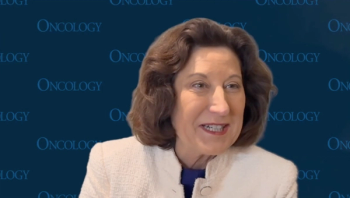
Oncology NEWS International
- Oncology NEWS International Vol 6 No 7
- Volume 6
- Issue 7
Bernard Salick Launches a New Health Care Enterprise
Bernard Salick, the man some call a medical visionary, does not brood on his setbacks. A mere 24 hours after Zeneca Group PLC had assumed total control of Salick Health Care, the Southern California nephrologist had launched yet another medical enterprise--Bentley Health Care.
Bernard Salick, the man some call a medical visionary, does not broodon his setbacks. A mere 24 hours after Zeneca Group PLC had assumed totalcontrol of Salick Health Care, the Southern California nephrologist hadlaunched yet another medical enterprise--Bentley Health Care.
(Zeneca Group PLC is a multinational bioscience company, which, throughits separate Pharmaceuticals business, is the second largest maker of cancerdrugs.)
Zeneca Take-Over Raised Ethical Issues
When Zeneca completed its purchase of Salick Health Care, the Britishcompany experienced an initial public relations setback when some medicalethicists frowned upon the prospects of a pharmaceutical company overseeingthe activity of physicians who prescribe its drugs.
In a front page story on April 15, 1997, in the New York Times, well-knownbio-ethicist Arthur Caplan, remarked:
"It is quite possible that Zeneca's motives are pure, but I thinkwe will see more deals like this in the future, and the real question iswhat sorts of checks and balances ought to be in place. Having your doctor,your clinic, your pharmacy, and your testing lab all owned by the sameperson is not the optimal structure for health care."
In response, Michael O'Brien, head of Salick, said that Zeneca wouldnever lean on physicians to prescribe Zeneca's drugs. He also pointed outthat Zeneca Pharmaceuticals and Salick Health Care are separate and independentbusinesses, although both are under the umbrella of Zeneca Group PLC.
"It never entered Zeneca's mind that this would be a way to sellmore Zeneca drugs," said Mr. O'Brien, adding that the proportion ofZeneca's business that is generated by the use of its drugs by Salick physiciansis a tiny fraction of 1%.
Before the telephone company had even been notified of the name switch,Dr. Salick was already courting potential investors, whom he hoped wouldsink up to $300 million into his most ambitious venture ever.
Just like his old model of cancer care, Dr. Salick envisions BentleyHealth Care as a provider of user-friendly outpatient centers that offersuch amenities as valet parking and round-the-clock, integrated medicalservices. He also intends to continue to provide medical treatment throughaffiliations with top-flight academic medical centers.
"If I can't treat a member of my family there, I don't want anythingto do with it," is a refrain Dr. Salick likes to use. But his plansfar exceed that mission. He envisions establishing centers that would notonly continue to specialize in cancer and renal failure, but would alsobranch out into the fields of AIDS and HIV treatment, as well as organtransplantation. And he fully expects to establish Bentley beachheads,in conjunction with government health services systems, in Europe and Asia.
Dr. Salick believes that catastrophic illnesses, which are by theirvery nature chronic and long-term, can be treated as carve-outs (in whichan HMO or a managed care organization refers all patients with a specificdisease to an allied specialty health care provider). Noting that 40% ofeach health care dollar ends up paying for catastrophic illnesses, he saidthe main drivers in his operation will be specialists not primary caredoctors.
With an initial focus on cancer and AIDS, Dr. Salick said he expectshis first centers to open within the next three months in California, Florida,and New York City.
He has already created quite a stir in New York City by continuing hispractice of luring away big name medical stars to his facilities. (Lastyear, for instance, Dr. Salick enticed Ronald Blum, MD, of New York University;Timothy Gee, MD, of Memorial Sloan-Kettering; and Geoffrey Herzig, MD,of Roswell Park Cancer Institute, to the new cancer facility that SalickHealth Care opened at St. Vincent's Hospital.)
In his most recent move, Dr. Salick announced in May that he had engagedas a consultant the renowned AIDS researcher, Dr. David Ho, who will retainhis position as director of the Aaron Diamond AIDS Research Center.
New AIDS Center Planned
Even more amazing is the spectacular hire for an enterprise that doesn'teven have a New York address yet. In April, Dr. Salick lured Luc Montagnier,the French co-discoverer of the AIDS virus, to set up shop in the mostunlikely of places--Queens College in Flushing, NY.
Dr. Salick donated $4.5 million to his alma mater to create the institution'sfirst endowed chair for Dr. Montagnier, who is leaving the Pasteur Institutein Paris. Dr. Montagnier will run a new AIDS research facility at the college,which will be funded with government, corporate, and private donations.
While Dr. Salick said he would have no say in how the college's newCenter for Molecular and Cellular Biology would operate, he hopes thatDrs. Montagnier and Ho, as well as other of the world's preeminent AIDSresearchers, could collaborate under the Bentley banner.
Toward that goal, Dr. Salick has even been talking with Dr. Robert C.Gallo, director of the Institute of Human Virology at the University ofMaryland and a chief rival of Dr. Montagnier. (Dr. Salick said representativesof Dr. Gallo had contacted him first.) If the California kidney specialistmanages to bring the two AIDS researchers together, cracked one Salickinsider, he should be awarded the Nobel Peace Prize.
A Fateful Meeting
Dr. Salick's frenetic efforts to launch his new enterprise were triggeredApril 10 in Los Angeles when Zeneca's chief executive, Sir David Barnes,and Thomas McKillop, chief executive officer of Zeneca Pharmaceuticals,told him that his long-term contract for roughly $5 million would be boughtout.
The partnership with the $9 billion multinational corporation had begunin 1995, when Zeneca bought a half interest in Salick Health Care for $195million. This deal included an option to buy the other half of the companyin 1997.
At the time, Dr. Salick saw the partnership with the British conglomerateas a way to generate capital for his ambitious push to expand his cancerempire that ultimately grew to 11 cancer centers, seven breast facilities,and 10 kidney dialysis centers. He assumed that when Zeneca bought therest of the company, he would remain as chairman and chief executive officer.
But when Zeneca exercised its option in April, bringing the total purchaseprice to $450 million, Dr. Salick was offered the advisory position ofchairman emeritus, which would pay $800,000 a year. Infuriated at the prospectsof a figurehead advisory post, Dr. Salick, who said he was caught completelyby surprise, declined the offer.
Zeneca's Perspective
What led to the change at the Salick helm and all the resulting acrimony?Foremost, Zeneca wanted its own team in place to operate the day-to-daymanagement of an increasingly complex network. Under Dr. Salick, the drivingforce was expansion, and as far as the British corporation was concerned,he wasn't spending as much attention on the existing network.
To ensure that growth would be sustained, Zeneca replaced Dr. Salickwith Michael J. O'Brien, who for the past 2½ years had been headingup Zeneca's specialties division, which produces high-quality inks anddyes and various industrial coatings, such as resins.
Prior to that job, Mr. O'Brien had worked for many years as the directorof marketing for Zeneca Pharmaceuticals for countries outside the UnitedStates. In that capacity, he was heavily involved as a liaison betweenmarketing operations and research and development. And for two years, hewas based in Wilmington, Del, serving as vice president of sales and marketingfor Zeneca Pharmaceuticals in the United States.
"I've seen Salick Health Care make a big splash of a new relationshipand then move on to the next relationship, and I want to be sure that therelationships that have been established are very solid," Mr. O'Briensaid. He believes it was "too much" to expect Dr. Salick to actuallyrun a complex business while spending 50% to 60% of his time out lookingfor new opportunities. "We felt we needed to put in professional managersto improve the day-to-day operations to create a strong platform for growth,"he said.
Dr. Salick responded that his organization had 2,000 employees to runthe day-to-day business. "If they acknowledge I'm a great visionaryand a great strategic planner, would they really want me to be arrangingfor the installation of computer systems?" he asked "Clearly,the company has to have one person at the top to define what the companydoes and hire the very best people."
Mr. O'Brien was quick to emphasize that Zeneca wants to continue "asstrenuously as possible" Dr. Salick's legacy of cancer center expansion,including expansion overseas.
Said Mr. O'Brien: "My objective is to make sure that Salick HealthCare continues to grow. I would say there is absolutely no change in thestrategy except that I want to do it in a more organized way. When we establishrelationships with, say, hospitals or physicians, it's clearly on a partnershipbasis; it isn't a win-lose approach."
The change in management has not hampered the talks under way with otherhealth care institutions to establish new major cancer centers. In fact,Mr. O'Brien said that many people have approached him since the change,saying they want to do business with the corporation. New York was theonly area where officials detected a hesitancy to talk with Salick HealthCare. But he characterized the hesitancy as only slight and said that ithas dissolved. "I personally think there are a lot more opportunitiesfor Salick Health Care to grow here in this country and eventually outsidethe United States."
Mr. O'Brien also indicated that he wants to place a greater emphasison the managed care portion of the business. Back in 1994, Salick HealthCare signed its first and only capitated treatment agreement with PhysiciansCorporation of America, which covers 115,000 persons in South Florida.
Before Zeneca took over, Salick Health Care had been in serious negotiationswith CIGNA in Arizona. When asked if that was still in the works, Mr. O'Briensaid that discussions were continuing and that other new opportunitieshad emerged as well.
To fuel his ambitious expansion plans for the fledgling Bentley HealthCare, Dr. Salick has been closeted with potential investors, includingmajor mutual fund companies, hospital chains, European and American pharmaceuticaland biotechnology companies, and those who have helped bankroll SalickHealth Care in the past. "I've been doing extremely well and makinggreat progress in getting the $300 million," he said.
Bringing AIDS Doctors Together
At the outset, one of Dr. Salick's major efforts has been laying thegroundwork for a chain of for-profit AIDS clinics. As he sees it, his successwill be incumbent upon involving three different groups--the scientistswho are developing an AIDS vaccine and working on other breakthroughs;top-notch doctors who are involved in patient care and clinical trials;and the leadership in the AIDS community.
He says his talks with AIDS leaders have been critical so he can avoida "political nightmare." Said Dr. Salick: "I've been sayingto them, I'm not interested in politics, I'm just trying to cure AIDS.I will in my naïve way try to bring Montagnier, Gallo . . . and othergreat AIDS doctors together. Some might laugh, but I am very good at bringingpeople together."
Dr. Salick is also wasting no time trying to establish a presence inEurope. Next month he will visit several European countries where he willtalk with, among others, a key AIDS physician in Italy and a physicianwho, he said, has been nominated to head the World Health Organization'scancer efforts. "You can be very sure that I'm going to try to persuadehim not to join WHO but to join me," he said.
Future of Salick Health Care
What will happen to Salick Health Care without its namesake remainsto be seen. But some of the physicians who were recruited by Dr. Salickto run the original centers believe that the transition should proceedsmoothly. One of those making that prediction is John S. Macdonald, MD,chief of medical oncology and medical director of the Temple UniversityCancer Center.
Calling Dr. Salick an "idea-a-minute person," he said thatthe Southern California physician was the lifeblood of the company, ashe took risks to develop a medical concept that no one else had tried.
But now with the organization more mature, Dr. Macdonald thinks theenterprise can exist without Dr. Salick. "His creative talents werevery well used for implementing start-up concepts," Dr. Macdonaldobserved. "With the course of the future development and growth ofthe company now firmly charted, his leaving is not as critical."
Whether all the old Salick centers stay in the Zeneca constellationremains to be seen. When asked if any of these medical centers were talkingwith him about an affiliation with Bentley, Dr. Salick uncharacteristicallyhad nothing to say. Observing that it was a "tricky" area, hesimply said, "I can't comment."
Articles in this issue
over 28 years ago
Researchers Report Conflicting Data on Cervical Cancer in AIDSover 28 years ago
CIN Website Now Offers Daily Online Cancer Newspaperover 28 years ago
Members Sought for Director's Consumer Liaison Group: NCIover 28 years ago
Trial Attempts to Reverse Taxol Resistance in Ovarian Cancerover 28 years ago
Taxotere Bests Adriamycin in Metastatic Breast Cancerover 28 years ago
Antiemetic Tablets Prove Equal in Efficacy to IV Drug Regimenover 28 years ago
Preop Chemotherapy May Have Advantages in Primary Breast Cancerover 28 years ago
Doxorubicin Benefits Older Breast Cancer PatientsNewsletter
Stay up to date on recent advances in the multidisciplinary approach to cancer.

















































































